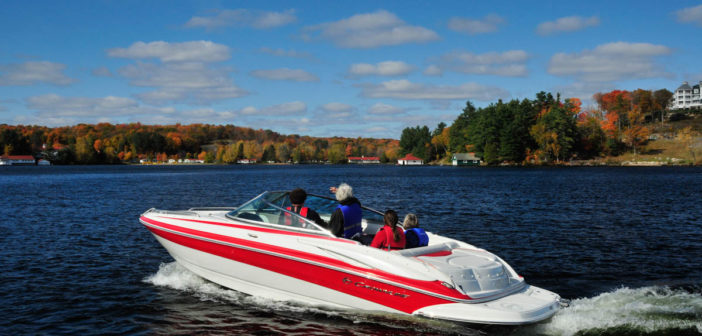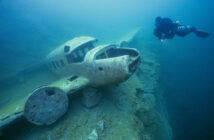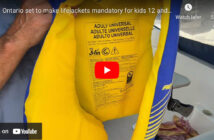Our great country of Canada is full of pristine natural beauty, but a good portion of that beauty is covered with snow for 4-6 months of the year. There are still lots of great reasons to stay on the water during shoulder season, but if you’re going to leave the dock it’s only sensible to make sure you’re prepared. Cold water is cruel and unpredictable, so not only should you be wary of pushing the limits of Mother Nature, it’s also wise to ensure you’re equipped for anything that could come up. If the risk is higher, your preparation should be higher too. Here are 10 practical tips to keep in mind for cold water boating.
1. Vet Your Vessel
It’s easy to get caught up in the excitement of going boating, but on-shore preventative maintenance is critical. Your boat is your means of getting home safely, so treat it accordingly. Just like with regular spring maintenance, inspect your vessel from top to bottom for mechanical or cosmetic issues that may have some up while in storage. Check the engine and fluid levels, ensure fuel lines are operational (and not frozen or watered down), test the electronics, and go over any mechanical or electronic procedures to ensure your equipment is fully operational. If you vet your vessel properly, any potential risks should be discovered on shore before pushing off.
2. PFD’s For You And Me
One of the most common mistakes boaters make is storing their PFD’s in an inaccessible location. The amount of time a person can tread water in extreme cold is shockingly short, so if there should be an emergency and someone goes overboard, having a PFD is critical. It’s always recommended to wear a PFD at all times while boating, especially in dangerous weather or water, but if you insist on storing them on board make them accessible. Inform your crew where they’re located and store them in a place that can be accessed by anyone at any time without obstruction or delay. Having proper fitting PFD’s for those on board is also essential.
3. Stock Up
Bring extra fuel and fluids (oil, washer fluid), spare parts for any high failure items (fuel filters, water pumps, etc), basic tools for on-water maintenance, extra food & water, and warm clothing. These items should be stored on your boat at all times anyway, but cold water is good reason to over-stock in the event of a breakdown. If you become lost or stranded in cold weather, the body has to work harder to maintain its internal temperature given the external factors. This means burning more calories, becoming dehydrated quicker, and the risk of hypothermia increasing.
4. Plan, Plan, Plan
Even if you’re headed out for a day of fishing in a spot you’ve visited a hundred times, your plans should change with the temperature. Double check your route, keep an eye on local weather/water patterns, and consider any potential changes to your route caused by the change in season. There could still be ice in protected areas with low current, or water levels could be high/low depending on the spring thaw. It’s not uncommon for a canal that was wide open in July to be either a dry creek bed, or a raging river, during the off season.
5. Share Your Plans
Inform friends or family of your whereabouts, including where you’re going and when you’ll be back. Safe practice is to give your watchperson a ‘failsafe’ time, which means the time at which they should contact rescue authorities if they don’t hear from you. For example, if you expect to be on shore by 5 pm tell them so, and issue a failsafe time that’s slightly later as a buffer for late arrival (if you get delayed for any reason you’ll have time to return to shore without issuing a false alarm). Specify your boat’s name, brand and model, length, color, the location of its towing vehicle (if you used one), and include a photo of your boat for added measure. The Canadian Safe Boating Council even has an online pre-fab Float Plan document you can use to give to your watchperson.
6. Waterproof Your Emergency Gear
You should always have an emergency locator beacon (EPIRB), a portable marine VHF radio, cell phone, whistle, signal flares, and a signal mirror kept in a waterproof storage bag or proper safety kit. Keep the bag accessible to anyone on board in case you end up overboard. Educate everyone on board on where to locate it and how to use the equipment in the event of an emergency.
7. Watch for Carbon Monoxide (CO) Poisoning
Cold temperatures mean you’re likely to be using covers, sunshades, or other weather protection while you’re on board. If so, bear in mind that cold engines produce more CO than warm ones do- so be mindful of your exhaust or other potential fumes if you enclose part of your boat. Instead of relying on covers, wear extra layers of clothing and leave the covers off, or use them as minimally as possible while maintaining safe airflow. Since CO is odorless and tasteless you won’t know there’s any risk until it’s already a problem (or if you have a CO detector on board), so fresh air circulation is critical. If you have them, run exhaust blowers extensively.
8. Never Boat While Impaired
Alcohol is a no-no, but it isn’t the only one. If you’ve got a cold or infection check with your doctor or pharmacist about the side effects of any prescription and/or over-the-counter medications you’re taking. If you shouldn’t drive, you shouldn’t boat. Colder temperatures affect the body differently than warm temperatures so even over-the-counter medication can have adverse effects that you’re unprepared for.
9. Know Your Limits
Understanding your personal limits, and the limits of your equipment, is the foundation of being a smart captain. Once you add in the increased risks posed by cold weather, respecting your limits becomes even more important. The margin for error is smaller when risk is higher, so if the water you’re in is near freezing, or air temperatures are hovering near zero, consider the risks (and the consequences) of pushing too hard. Going past your allotted travel time, or venturing into uncharted waters that weren’t on your Float Plan can turn a seemingly safe situation into a dangerous one in an instant. Respect your limits, both for yourself and for those waiting for you on shore.
10. Time Management
Obviously you’ll be keeping an eye on the weather regardless of the season (as all boaters should), but cold weather and cold water means allocating more time than usual. If you’re fighting cold temperatures, routine tasks will take longer to complete. Engines don’t run as efficiently in cold weather, and human beings move slower as well. If your trip back to the marina usually takes an hour in the summer, allocate extra time if it’s during the cold season. People and equipment all slow down when temperatures drop, so plan accordingly and factor that into your Float Plan.









